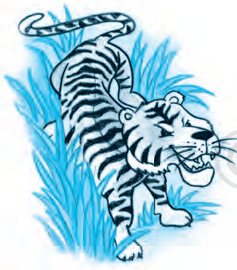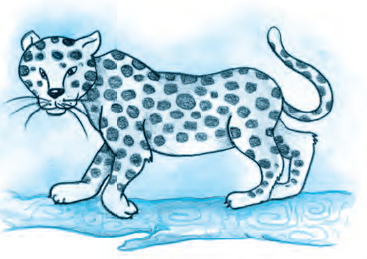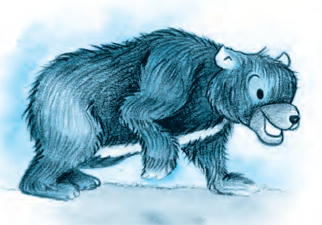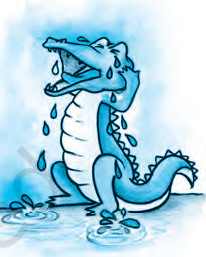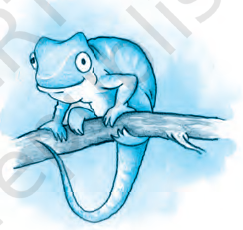CBSE Class 10 English Poem How to Tell Wild Animals Summary, Line by Line Explanation along with Difficult Word Meanings and Literary Devices from First Flight Book
How to Tell Wild Animals – Here is the Class 10 English First Flight Poem 4 How to Tell Wild Animals Summary and Detailed explanation of the poem along with meanings of difficult words. Also, the explanation is followed by the literary devices used in the Poem
- Theme of the Poem
- How to Tell Wild Animals Introduction
- How to Tell Wild Animals Previous Year Questions with Model Answers PDF
- How to Tell Wild Animals Video Explanation
- How to Tell Wild Animals Summary
- How to Tell Wild Animals Summary in Hindi
- How to Tell Wild Animals Poem Explanation
Related:
- How to tell Wild Animals Question Answers (Important)
- How to Tell Wild Animals MCQs
- How to Tell Wild Animals Previous Years Question with Answers
Class 10 English Poem 4 How to Tell Wild Animals
by Carolyn Well
Theme of the Poem
The topic of the distinctive attributes and characteristics of wild animals and how they differ from domestic animals is the theme of Carolyn Wells’ poem “How to Tell Wild Animals.” The poem jokingly enumerates many ways to distinguish wild animals from domestic ones, highlighting their untamed, independent spirits, and natural habits.
Top
How to Tell Wild Animals Poem Introduction
In the poem, the poet has explained the characteristics of various wild animals in a very funny way. She has used language in a way that it generates humour. She is introducing the reader to various kinds of wild animals like Asian lion, Bengal tiger, bear, etc.explaining each of the animals in a very humorous way.
How to Tell Wild Animals Previous Year Questions with Model Answers PDF
Download the previous year questions of the Poem How to Tell Wild Animals of class 10 for free. With the help of this, you can prepare for the exam.
To Download How to Tell Wild Animals Previous Year Questions with Model Answers- Click Here
How to Tell Wild Animals Summary
The poet is describing the various wild animals. These animals are very dangerous and she has introduced them one by one in a very funny way. First of all she tells us about an Asian lion. She says that if you are visiting the jungles of the east and there you see an animal which has tawny skin and he roars so loudly that you will die out of fear. This means that you have seen an Asian lion. Next in the line is the Bengal tiger that she has explained to be a royal animal that at once attacks and kills a man. She says by adding humour that if this beautiful black striped animal kills you and eats you, then you have surely met a Bengal tiger. After this, she says that if the reader met an animal that has black spotted skin and it at once jumps on him, then it means that the reader has met a leopard. Moreover, she says that if one will cry out in pain, it maybe of no use as the leopard will not stop attacking him. Then she moves on to the bear that she says will hug very tightly. This is the way to recognize a bear as it kills a person by hugging him very tightly. So, she says that the bear will continue to hug us tightly and that is the only way to recognize him. After this, she asks a question to the readers that do they know how to recognize beasts that hunt their prey. Here she explains about hyenas which she thinks have a smiling face and the crocodiles that have tears in their eyes. This can be seen when they are killing their prey. The last one in the list is the Chameleon. She says that it is a lizard – like creature which doesn’t have ears and wings just like a lizard. Only this can help you differentiate between a lizard and chameleon. She further says that the chameleon has a quality of changing its color according to the colour of the surface. So, to explain this she says that if the reader looks at the tree and if he can only see the tree, this means that there is a chameleon sitting on it which has already turned its color to brown just like the branch of the tree.
Top
How to Tell Wild Animals Summary in Hindi
कवि विभिन्न जंगली जानवरों का वर्णन कर रहा है। ये जानवर बहुत ही खतरनाक होते हैं और कवि ने एक-एक करके बड़े ही मजेदार अंदाज में इनका परिचय कराया है । सबसे पहले वह हमें एक एशियाई शेर के बारे में बताती है। वह कहती है कि यदि आप पूर्व के जंगलों में जा रहे हैं और वहां आपको एक जानवर दिखाई देता है जिसकी त्वचा सांवली है और वह इतनी जोर से दहाड़ता है कि आप डर से मर जाएंगे। इसका मतलब है कि आपने एक एशियाई शेर देखा है। अगली पंक्ति में बंगाल टाइगर है जिसे उसने एक शाही जानवर बताया है जो एक बार में एक आदमी पर हमला करता है और उसे मार देता है। वह हास्य जोड़ते हुए कहती हैं कि अगर यह खूबसूरत काली धारीदार जानवर आपको मारकर खा जाता है, तो आप निश्चित रूप से एक बंगाल टाइगर से मिले हैं। इसके बाद वह कहती हैं कि अगर पाठक किसी ऐसे जानवर से मिलता है जिसकी त्वचा पर काले धब्बे हैं और वह तुरंत उस पर कूद पड़े, तो इसका मतलब है कि पाठक को तेंदुआ मिल गया है। इसके अलावा, वह कहती है कि अगर कोई दर्द में चिल्लाएगा, तो शायद इसका कोई फायदा नहीं होगा क्योंकि तेंदुआ उस पर हमला करना बंद नहीं करेगा। फिर वह भालू के बारे में कहती है कि वह बहुत कसकर गले लगाएगी। यह है भालू को पहचानने का तरीका, क्योंकि यह किसी व्यक्ति को बहुत कसकर गले से लगा लेता है। तो वह कहती है कि भालू हमें कसकर गले लगाता रहेगा और उसे पहचानने का यही एकमात्र तरीका है। इसके बाद वह पाठकों से एक सवाल पूछती हैं कि क्या वे अपने शिकार का शिकार करने वाले जानवरों को पहचानना जानते हैं। यहां वह हाइना के बारे में बताती है जिसके बारे में वह सोचती है कि उसका चेहरा मुस्कुराता है और उन मगरमच्छों के बारे में जिनकी आंखों में आंसू हैं। यह तब देखा जा सकता है जब वे अपने शिकार को मार रहे हों। सूची में अंतिम एक गिरगिट है। वह कहती है कि यह छिपकली जैसा प्राणी है जिसके कान और पंख बिल्कुल छिपकली की तरह नहीं होते। केवल यह आपको छिपकली और गिरगिट के बीच अंतर करने में मदद कर सकता है। वह आगे कहती हैं कि गिरगिट में सतह के रंग के अनुसार अपना रंग बदलने का गुण होता है। तो इसे समझाने के लिए वह कहती हैं कि अगर पाठक पेड़ को देखता है और अगर उसे केवल पेड़ दिखाई देता है, तो इसका मतलब है कि उस पर एक गिरगिट बैठा है जो पहले से ही पेड़ की शाखा की तरह अपना रंग भूरा कर चुका है।
Top
How to Tell Wild Animals, SEE THE VIDEO
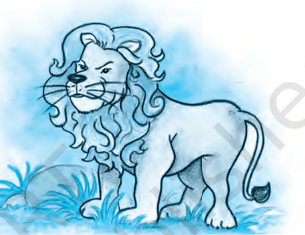
How to Tell Wild Animals Poem Explanation
POEM :
If ever you should go by chance
To jungles in the east;
And if there should to you advance
A large and tawny beast,
If he roars at you as you’re dyin’
You’ll know it is the Asian Lion…
Word meaning : Tawny: yellowish brown color
Explanation of the poem passage above: The poet is telling the readers that how they can recognize various animals in the jungles of the east. So, in first stanza she says that if the reader comes across an animal whose skin is yellowish brown in colour and if it roars at him so strongly that he can die out of fear, it means that he has encountered an Asian Lion. She has humorously explained the Asian Lion which could kill a person with its roar.
Literary Devices :
Rhyme: Rhyme scheme ababcc is followed (chance-advance, east-beast, dyin-lion)
Enjambment: Continuation of a sentence to the next line (and if there…..tawny beast)
Inversion: Change in the format of a sentence (if there should to you advance)
Assonance: use of vowel sound ’o’ (you should go, should to you, roars,)
Allusion: Reference to a famous thing, place, species of animal, etc (Asian Lion)
POEM :
Or if some time when roaming round,
A noble wild beast greets you,
With black stripes on a yellow ground,
Just notice if he eats you.
This simple rule may help you learn
The Bengal Tiger to discern.
Word meaning :
Noble: high born, aristocratic
Discern: recognize
Explanation of the poem passage above: She explains an animal that roams in the jungle and belongs to a royal clan. The colour of its skin is yellowish with black stripes. She says that if you notice that he kills you and eats you up, then this means that you have surely seen a Bengal Tiger. This time also she has used dark humour to explain how a tiger looks like because once a person has been eaten up by a wild animal, there is no use in determining which wild animal it is.
Literary Devices :
Rhyme: Rhyme scheme ababcc is followed (round-ground, you-you learn-discern)
Alliteration: repetition of consonant sound ‘r’ at start of two or more closely connected words (roaming round)
Inversion: Change in the format of a sentence (The Bengal Tiger to discern)
Allusion: Reference to a famous thing, place, species of animal, etc (Bengal Tiger)
Assonance: Use of vowel sound ’o’ (or if some time when roaming round)
POEM :
If strolling forth, a beast you view,
Whose hide with spots is peppered,
As soon as he has lept on you,
You’ll know it is the Leopard.
’Twill do no good to roar with pain,
He’ll only lep and lep again.
Word meaning :
Strolling: walking casually
Forth: forward
Hide: skin of animal
Peppered: Here it means the spots
Lept (Leapt): jump towards someone
Explanation of the poem passage above: The poet says that if you are casually walking in a jungle, you will meet an animal who has a skin with spots on it. This animal is so fast that it will leap on you at once which means that it will jump on you. This jumping is an indication that it is none other than the Leopard. Moreover, she adds that if you will cry out in pain, it is not going to be of any use as it will keep on jumping on you. So, in this stanza the poet has explained the characteristic of a leopard.
Literary Devices:
Rhyme: Rhyme scheme ababcc is followed (view- you, peppered- Leopard, pain-again)
Alliteration: use of consonant sound ‘h’ in the beginning of two words (he has)
Poetic license: A liberty to the poet to change the spellings in order to create rhyme or rhythm in a poem (use of lept instead of leapt)
Repetition: use of ‘lep’ word in the last line.
Assonance: use of vowel sound ‘o’ (strolling-forth-you, whose-spot, do no good to roar)
Consonance: use of ‘l’ sound (he’ll only lep lep)
POEM :
If when you’re walking round your yard
You meet a creature there,
Who hugs you very, very hard,
Be sure it is a Bear.
If you have any doubts, I guess
He’ll give you just one more caress.
Word meaning :
Yard: backyard or the lawn area of a house
Caress: A gentle touch
Explanation of the poem passage above: If you are walking in the lawn area of your house and you meet a creature which hugs you tightly, it is a bear. She further adds that if you are still in doubt regarding the animal, the easiest way is that he will keep hugging and touching you very gently. This act of his will make you sure about its identity. You will come to know that it is a bear.
Literary Devices:
Rhyme: Rhyme scheme ababcc is followed (yard-hard, there- bear, guess-caress)
Enjambment: Continuation of a sentence to the next line (if you were walking….creature there)
Alliteration: use of ‘w’ sound (when-walking), use of ‘h’ sound (who- hugs), use of ‘b’ sound (be-bear)
Assonance: use of vowel ‘e’ (meet a creature there)
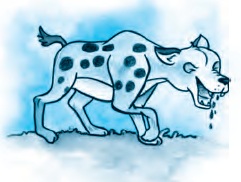
POEM :
Though to distinguish beasts of prey
A novice might nonplus,
The Crocodile you always may
Tell from the Hyena thus:
Hyenas come with merry smiles;
But if they weep they’re Crocodiles
Word meaning :
Distinguish: Differentiate
Beast of Prey: Any animals that hunts other animals for food
Novice: Someone new to a job
Nonplus: be confused
Explanation of the poem passage above: The poet says that for someone who is new to the job of recognizing animals, it will be like a puzzle to recognize animals that hunt other animals for their food. So here the poet tries to help out the readers by telling the difference between two animals. He says that Hyenas will be smiling whereas if it is a crocodile, it is always in tears. Both of these animals are dangerous.
Literary Devices:
Rhyme: Rhyme scheme ababcc is followed (prey-may, nonplus-thus, smiles-crocodiles)
Alliteration: use of consonant sound ‘n’ (novice-nonplus), use of ‘th’ sound (the-thus)
Enjambment: continuation of sentence to the next line (though to distinguish….might nonplus, The crocodile…..hyena thus)
POEM :
The true Chameleon is small,
A lizard sort of thing;
He hasn’t any ears at all,
And not a single wing.
If there is nothing on the tree,
’Tis the chameleon you see.
Explanation of the poem passage above: The poet says that the next is Chameleon which is a small creature. It looks like a lizard but the difference between the two is that chameleon does not have ears and wings. Moreover she says that chameleon has the ability to change its color according to the surface on which it is sitting. Therefore, if you see a tree and find nothing else on it, then it must be a chameleon sitting on it. It has changed its colour into the color of tree.
Literary Devices :
Rhyme: Rhyme scheme ababcc is followed (small-all, thing-wing, tree-see)
Alliteration: use of ‘h’ sound (he hasn’t)
Consonance: use of ‘g’ sound (single wing)
Also see:
- Class 10 English Syllabus
- CBSE Class 10 English Lesson Explanation, Summary
- CBSE Class 10 English Question Answers (Important)
- Character Sketches of Class 10 English
- CBSE Class 10 English MCQs
- Class 10 English First Flight word meanings
- Class 10 English First Flight Poems word meanings
- Class 10 English Footprints without Feet word meanings
- Poetic Devices in Poems of First Flight book
- Class 10 English Complete Study Guide
Explanation and Summary of Class 10 Poems from First Flight book
Important Videos Links

